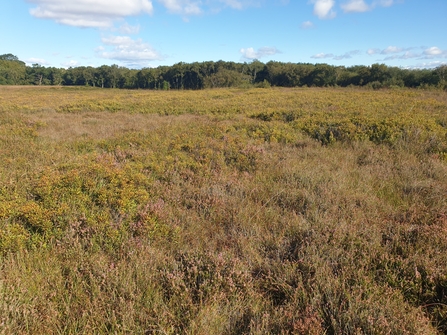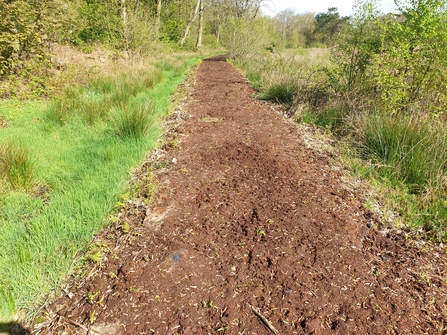Heysham Moss really is an unexpected gem. Surrounded on one side by a housing estate, to another by miles of flat farmland, and on another side by a solar farm, this remnant of lowland raised peat bog, wet woodland and grassland seems to appear from nowhere. Being on so many people’s doorsteps, Heysham Moss should be a well-used and well-loved wildlife oasis, but some of the infrastructure on site was in need of a revamp.
Access Heysham Moss
Roe deer at Heysham Moss by Tom Dullage

Heysham Moss - Jenny Bennion
After The Wildlife Trust for Lancashire, Manchester & North Merseyside bought the site back in 2003 a series internal fences and kissing gates were installed, but after working hard for 20 years they were ready for renewal. The initial interpretation boards and signage also needed updating. The circular path around the site was also often waterlogged and difficult to use for the many people who neighbour the site and for whom Heysham Moss should be a convenient and accessible way for them to engage with nature.

New kissing gate at Heysham Moss - Jenny Bennion
Thanks to £30,000 funding from the Lancashire Environmental Fund a series of improvements have been made. New kissing gates have been installed, and new signage and path waymarkers will be arriving soon. There have also been improvements to the access track, including a new gate, which runs to the east of the site. This will allow better access for our conservation staff to continue caring for both the habitat and for the herd of native English long horn conservation grazing cattle who take up residence on the grassland every summer.
Improving the path around the reserve was also a priority, supporting people’s access to nature. Heysham Moss is a naturally wet site so during wet weather we will always recommend a good pair of wellies to make best use of the paths, but the new route should be much more accessible year-round.

Newly restored path at Heysham Moss - Jenny Bennion
The creation of the paths posed a challenge. As the area is designated as a Site of Special Scientific Interest we were unable to bring in materials such as stone to reinforce the paths, so we had to use what was already available on site. But with a little creative thinking we realised that this could provide an exciting opportunity to help rejuvenate some of the peat areas which were being invaded by bracken.
This invasive species can take hold in degraded peat, resulting in further drying and degradation of the peat through the uptake of water from its roots, and outcompeting the natural peatland vegetation that should be there. The best way to control bracken is to remove its rhizomous root system. So we scraped off some areas of the top layer of rhizome-matted degraded peat and used this material to create new areas of raised pathways. These were then secured with a geotextile which will naturally degrade as the path naturally revegetates. The exposed healthier peat in the scrapes will be planted up with natural peatland vegetation such as sphagnum moss and cotton grass to help restore the habitat.
The new paths will not only allow people to enjoy the site more easily, but will hopefully encourage people to stick to the paths and avoid damage to the fragile and precious habitat. And having more people on site will in turn, we hope, help to discourage antisocial behaviour.
We truly hope that people will be able to enjoy a visit to Heysham Moss for years to come. This wild oasis is home to rare plants, special habitats and amazing wildlife.
